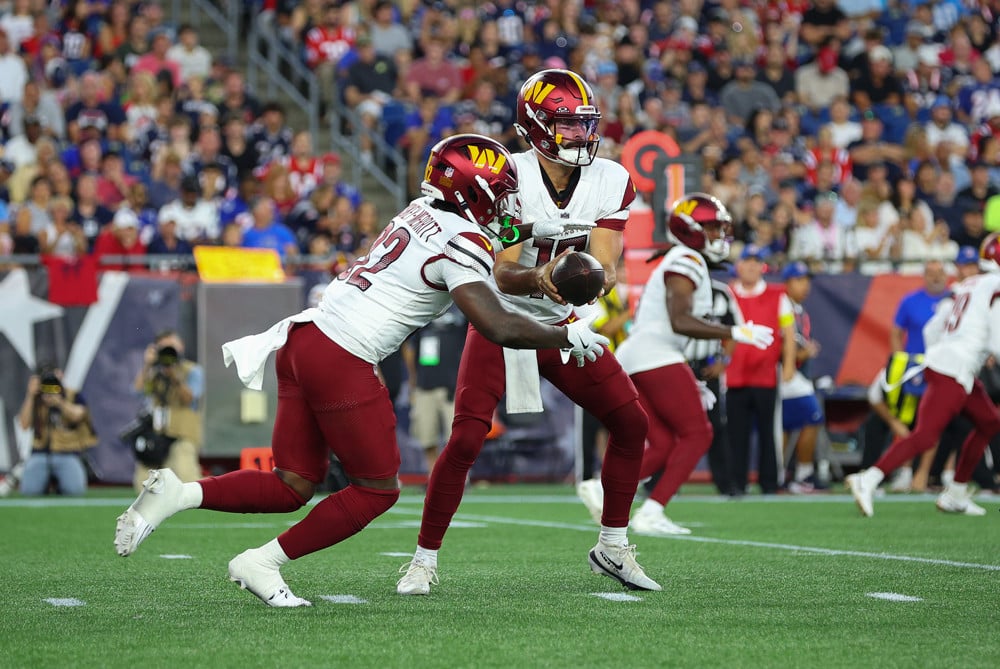One of the most important but under-discussed edges in best ball is learning how to treat players whose ADPs rise or fall over the course of draft season. Every summer, we see dozens of players climb multiple rounds or slip down the board. Examples this year include Jacory Croskey-Merritt, who was a Round 20 pick for months and is now going around pick 100. Or TreVeyon Henderson, who was going in the 60s and now doesn’t last past pick 40.
Our natural instinct is to focus only on figuring out where to shift their ranking when a substantial part of the edge comes from understanding what those moves mean in the context of the contest you’re playing.
This article breaks down how to evaluate risers and fallers, why their movement matters more in large summer-long tournaments, and how you can use them to gain leverage in the best ball playoffs. This is about game theory, not player takes.
Contest Structure Shapes Strategy
The first question is: What type of contest are you drafting in?
- Time-boxed contests (short windows, small fields)
If a tournament fills in a couple of weeks, everyone is drafting under the same conditions. There’s no history of people getting drastically different prices on players. In these contests, ADP movement doesn’t really matter. Just use traditional best ball concepts as I’ve described in this On The Clock article. - Large summer-long contests (BBM, Puppies, etc.)
Here’s where ADP movement becomes a huge deal. These contests run for months, which means the same player may have been a 12th-round pick in May, an eighth-rounder in July, and a fifth-rounder in August. And when the playoffs arrive and your team is no longer just competing against its draft room, it’s competing against every roster built across the summer. That’s why it’s critical to evaluate not only a player’s talent, but also how they’ve been priced for other drafters across the season.
Evaluating Risers and Fallers
When looking at ADP movement, two key questions should always be asked:
- How much did they move?
- Where in the draft did that movement occur?
The answers dictate whether you’re looking at a minor adjustment or a fundamental shift in playoff leverage.
Earlier ADP Movement = More Impactful
The earlier in a draft an ADP shift occurs, the more significant the ripple effects. There are two main reasons for this:
- Draft Capital: When a player climbs from the sixth to the fourth round, you’re now drafting them at a premium price compared to thousands of teams that got them cheaper. Those other rosters essentially have two extra rounds of capital to work with, putting you at a disadvantage in the playoff rounds. The reverse is also true: If a player falls two rounds, drafting them later gives you a built-in edge since your playoff opponents invested more capital for the same player.
- Unique Early-Round Pairings: At the very top of drafts, even small ADP shifts can reshape roster construction. A player moving a few picks in the first or second round unlocks new combinations that weren’t available earlier in the contest. Sliding down the board creates rare and discounted pairings, while rising into a new tier can still provide value through uniqueness, since they now stack with different early-round players.
The bottom line: ADP shifts in the early and middle rounds matter far more than late-round movement. They not only dictate how much draft capital is tied up in a player, but also influence the uniqueness of your roster build in ways the back half of drafts simply can’t replicate.
Late-Round Movement = Ownership Leverage
Once you’re in the 15th–18th round, ADP movement is less about draft capital value and more about how many teams have this player at all.
- Example: Dyami Brown (drafted in ~89% of BBM) vs. Parker Washington (~2%). If Brown breaks out in a big way, he helps you reach the playoffs, but he won’t separate you in the finals because everyone likely has him. Whereas if Washington has the breakout season, your lineup instantly becomes unique leverage in playoff pods and the finals. You may immediately respond with “but Dyami Brown is more likely to break out” and that may be true, but you need to be fairly confident that’s accurate to give up such substantial uniqueness.
- Undrafted → drafted: If a player goes undrafted most of the summer but jumps to the 14th round in August, you are paying more than early drafters, but you’re also drafting a player who exists on a smaller percentage of playoff teams. It’s a complicated situation, but there’s no question that uniqueness adds value.
Case Studies: Applying the Riser/Faller Lens
Sometimes the theory is easier to grasp when you put it against real ADP movement. Let’s look at four players whose draft positions have shifted meaningfully this summer and what that means for us in large-field contests like BBM:
TreVeyon Henderson – From the
We've launched a new NFL Best Ball product
Best Ball is a draft-only format. No trades, no waivers, and no setting lineups. Our Best Ball team includes a mix of the most successful players and highly-regarded fantasy analysts: Adam Levitan, Justin Herzig, Evan Silva, Mike Leone, and more.
This product is designed to go well beyond our industry-leading rankings, including ADP, Late-Round Targets, Players to Scroll for, Projected Ownership, Market Movement Reports and more.
Click below to learn more about what’s inside our NFL Premium Best Ball subscription.
Best Ball Product Details » Already a subscriber? Log In

